This article was co-authored by Aanand Geria, MD. Dr. Aanand Geria is a board certified dermatologist, a clinical instructor at Mt. Sinai, and the owner of Geria Dermatology based in Rutherford, New Jersey. Dr. Geria's work has been featured in Allure, The Zoe Report, NewBeauty, and Fashionista, and he has peer-reviewed work for the Journal of Drugs in Dermatology, Cutis, and Seminars in Cutaneous Medicine and Surgery. He holds a BS from the Penn State University and an MD from Rutgers New Jersey Medical School. Dr. Geria then finished an internship at Lehigh Valley Health Network and a dermatology residency at the Howard University College of Medicine.
There are 12 references cited in this article, which can be found at the bottom of the page.
wikiHow marks an article as reader-approved once it receives enough positive feedback. In this case, several readers have written to tell us that this article was helpful to them, earning it our reader-approved status.
This article has been viewed 1,087,222 times.
Having clear, glowing skin can be a great boost to your confidence, but it doesn't always come naturally. Following a strict regime for a week including cleansing and moisturizing your face will help you achieve that glow, but proper skincare is so much more than just washing your face. Getting a glow and maintaining it involves much of your daily habits and keeping those in check will help you maintain radiant skin for a long time.
Steps
Determining Your Skin Type
-
1Learn the basic skin types. There are five different types of skin: dry, oily, combination, normal, and sensitive, and it's important to know which one is yours before you begin treating your skin. Every skin type is treated differently, so learning how to treat yours will give you the most radiant glow.
-
2Cleanse your skin. In order to test your skin to determine what type of skin you have, it's important to cleanse it with a mild cleanser to remove any excess dirt, makeup, and oils. Then, pat dry with a towel, but do not rub as you don't want to irritate your skin.Advertisement
-
3Press tissue paper or a napkin to the T zone. After you have cleansed and dried your skin, wait about 30 minutes, and then test the skin on your T zone. Taking tissue paper or a napkin, gently press down on your T zone, making sure the entire area makes contact with the paper.
- The T zone includes your forehead and your nose. Picture making a T, with the top of the T above your eyebrows and the length of the T along your nose.
-
4Examine the tissue. Remove the paper from your face and look at the dirt and oil left on it from your skin to determine your skin type. Here are some different things you might see:
- Dry: Skin feels stretchy and taut, there are signs of flaky and dead skin after you've cleansed your face, and pores are small. With this skin type you'll need to take extra care in moisturizing it.
- Oily: Shiny face and oil on the tissue, with large open pores. In order to achieve a glow with this face you'll need to keep the oil production down by using lighter products. You don't want your face to have a glow just from the oil!
- Combination: The tissue will be oily because of the T zone, but your cheeks and other parts of your face may be normal or dry. This is a very common skin type and can be treated easily.
- Normal: The tissue will have little oil and there will be no flakes of skin. This really just means that your face is healthy and produces an adequate amount of oil -- not too much, not too little. You'll still want to treat your face daily, though, to maintain its normalcy.
- Sensitive: This won't necessarily show on your tissue, but it may show on your face after you've removed the tissue. Does your face look red or irritated? Do you often feel a burning sensation on your face after using facial care products? If this is the case, you likely have sensitive skin and will just need to take extra care when cleansing your face to make sure you don't use products that are too harsh on your skin.
Following CTM
-
1Learn CTM (Cleansing, Toning, and Moisturizing) and stick to a daily routine. It's important that you follow this routine every day, because it provides your skin with the moisture and cleanliness it needs. Doing this in the morning will help kick start your day by giving you a fresh, clean face and then repeat the routine at night. [1]
- People who have more sensitive skin or dry skin should only do this once per day, as cleansing your skin too much can dry it out even more and cause it to be more irritated. If you have dry skin, try following CTM in the morning and then removing your makeup and moisturizing your face at night before you go to bed.
- Remember that exfoliating is also important. Exfoliate using a face scrub or an enzyme exfoliant two to three times a week for normal or oily skin, and one to two times a week for dry or sensitive skin.
-
2Cleanse your face. Buy a soft, gentle cleanser to wash your face with each day. Start by rinsing your face with warm water to help lift dirt out of your skin, and then using a cleanser to remove oil and cleanse your face. Put the cleanser on your fingertips and gently rub onto your face and neck using circular motions and working out from the center of your face. Then, rinse with warm water and pat dry with a towel.[2]
- Make sure you get a cleanser suited for your skin type. When buying a cleanser there will often be information on the bottle explaining what type of skin type the cleanser is good for. You can also use natural facial cleansers that will probably be less irritating on your face.
- A cream cleanser is more hydrating so it may feel more refreshing on your face and can be better if you have dry skin. However, you can also use a gel cleanser if you have more oily skin or want to remove makeup.
- Always remove makeup before going to bed, even if you usually cleanse your face in the morning. Leaving any makeup on your face while you sleep will leave your face feeling more oily in the morning and can clog pores. You can use makeup remover or cleansing wipes to quickly remove any eye or face makeup.
-
3Apply toner. Take a cotton ball and pour toner over it, or dip the cotton ball into the toner and then swipe on your T zone and other affected areas. If you have oily skin, toner is great for targeting those problem areas. [3]
- If your skin is dry or sensitive, be careful when using toner so it doesn't dry out your skin even more and always test toner out on a small area to see how it affects your skin. Some toners may be stronger than others so you'll want to read the bottles and do some research on what toner is best for dry or sensitive skin.
-
4Moisturize your skin. Once you have cleansed your face, you can apply moisturizer to keep your face hydrated and healthy. Moisturizers come in all different types so you should be able to find one suited for your skin. Even if you have oily skin you'll want to moisturize it-- just buy one that is lighter and specifically for oily skin. Buying a moisturizer with SPF is a great idea to prevent sun damage during the day.EXPERT TIP
To get dewy skin, use a hydrating moisturizer followed by a moisturizing primer and a tinted moisturizer.
Laura Martin is a Licensed Cosmetologist in Georgia. She has been a hair stylist since 2007 and a cosmetology teacher since 2013.
Laura Martin
Licensed Cosmetologist Laura Martin
Laura Martin
Licensed Cosmetologist -
5Use eye cream. Because the area under your eye is the thinnest part of your skin, it lacks a lot of moisture. Pat a pea-sized amount of eye cream under your eye around the orbital bone and let the cream soak into your skin. This can also help if you have dark circles under your eyes, wrinkles, or eye puffiness. [4]
Monitoring Your Lifestyle Habits
-
1Think about the stressors in your life. Are you feeling overwhelmed, overworked, or stressed out over something? Stress can cause an increase in acne, so monitor those things that are making you feel overwhelmed and try to find a way to cut them out of your life or reduce their impact to better your health.
- When you are stressed your body releases stress hormones including cortisol, which triggers an increase in skin's oil production, leading to increased acne. [5]
- Stress may cause you to make involuntary muscle contractions that can lead to the formation of wrinkles and frown lines. While this can be treated with Botox or other medical procedures, it is best to keep your stress levels to a minimum.
- Getting adequate sleep can also lower stress levels. When you lose an hour of sleep your risk of psychological stress increases by 14%. Imagine losing four hours of sleep in one night--- that increases your chances by over 50%! Try to aim for seven hours of sleep so that you don't run the risk of developing acne from stress related to inadequate rest. [6]
-
2Avoid unhealthy foods. Your diet is one of the most important parts of keeping clean skin. If you are eating a lot of fatty, greasy foods, or junk food, your skin is going to react to that food and be prone to more breakouts. Pay attention to the type of food you have been eating and see if it correlates to your breakouts on your face.
- A diet that is high in refined sugars, also known as a high glycemic index diet, can also cause breakouts, so read nutritional labels and try to avoid foods that are high in these sugars.[7]
-
3Eat foods high in antioxidants, vitamins, and other good nutrients. Although there are a lot of foods that worsen your skin, there are also a lot of foods that can benefit your skin, giving it the proper nutrients that it needs to maintain hydration and stay healthy. Some great things to focus on when choosing foods for your diet are:[8]
- Selenium -- It's a mineral that helps protect your skin from gaining free radicals that can cause wrinkling, dryness, and some diseases. You can find these minerals in foods like Brazilian nuts, shrimp, lamb, tuna, salmon, whole wheat pasta, light turkey, and cooked beef.
- Antioxidants--These also prevent free radicals from entering your body. Colorful fruits and vegetables like berries, tomatoes, spinach, beets, squash, and sweet potatoes all have antioxidants.
- CoQ10 -- This is a key antioxidant that decreases in your body as you get older. You can find this in salmon, tuna, poultry, liver, and whole grains. Some skincare products also contain this to prevent wrinkles.
- Vitamin A -- This prevents dry, flaky skin and can be found in carrots, cantaloupes, and oranges along with leafy greens, eggs, and low-fat dairy foods. You can also purchase prescription acne products that contain Vitamin A called retinoids that will help treat wrinkles and brown spots.
- Vitamin C -- This helps protect you from the sun and prevent sun damage.[9] Find this vitamin in citrus fruits, red bell peppers, papayas, kiwis, broccoli, and brussels sprouts.
- Vitamin E -- This is another antioxidant that can help save your skin from sun damage and prevent inflammation. Eat foods like nuts, seeds, vegetable oils, olives, spinach, asparagus, and leafy greens to obtain this vitamin.
- Healthy fats -- Yes, some fats are good for you! Look for Omega-3s and Omega-6s to help create your skin's natural oil barrier, which keeps away dryness and blemishes while also making your skin look younger and smoother. You can find these fatty acids in olive and canola oils, flaxseeds, walnuts, and cold-water fish like salmon, sardines, and mackerel.
- Green tea -- This is considered a "magic potion" for your skin because it can help stop inflammation, slow DNA damage, and prevent sun damage.
-
4Drink lots of water. Water is so important for your health for so many reasons, and drinking enough water during the day will give your skin that hydrated glow. Increase your water intake to eight glasses a day to help rid your body and skin of toxins.[10]
- Just like any organ in your body, the skin is made up of cells that, without water, will not function properly. Skin is one of the last organs to be reached by water you have drunk, so make sure you drink an adequate amount so that it hydrates your skin. [11]
-
5Exercise frequently. Exercising on a regular basis not only helps decrease stress levels, but it also increases your blood circulation which sends more oxygen to your skin cells and carries cell waste away. Keep in mind that sweat can cause breakouts, so make sure you practice proper hygiene after your workout.[12]
-
6Use sunscreen.[13] This cannot be stressed enough. One of the greatest ways to damage your skin is through overexposure to the sun. You may think you're getting that "natural glow" by tanning, but exposure to the sun without protecting your skin increases your risk of skin cancer and can create sunspots on your skin as well as make your acne worse through the inflammation of a sunburn. [14]
- Anytime you go outside, put sunscreen on. Sunscreens are made for different skin types as well, so if you have oily skin, find a lighter sunscreen with ingredients like avobenzone, oxybenzone, methoxycinnamate, octocrylene, and zinc oxide. You can also search for a label that says noncomedogenic, which means it won't clog your pores.[15]
-
7Avoid touching your face. This may seem silly, but acne can be triggered by the oils on your hands. Throughout the day, pay attention to where you place your hands. Are you resting your chin or cheek in your palm? Are you constantly picking at blemishes on your skin or swiping your hair out of your face? All of these things contribute to the oil on your face, which in excess can lead to more acne.
- Your cell phone also carries a lot of germs and oils that can easily attach to your face. The heat produced by your cell phone can multiply bacteria and when you put it to your face to talk on the phone you are being exposed to much of that bacteria. Get into the practice of cleaning your phone with a wipe or hand sanitizer once a day. [16]
Wearing Makeup
-
1Even out your skin tone. Many people have skin that's discolored or splotchy, so evening out your skin tone to remove redness is an important step to achieve a healthy glow. Apply a tinted moisturizer, blending it in evenly over your skin. Make sure you use one that is similar to your skin tone (you don't want to use one that is bronze if you have ivory skin) and don't cake it on. Look for a tone correcting moisturizer that is relatively sheer.[17]
- If your skin tone is between two shades, choose the shade slightly lighter than your skin.
-
2Apply concealer. Use a concealer slightly lighter than your skin. This will help cover blemishes, redness, and dark circles. Dab small amounts on your problem areas and blend in lightly with your finger. Applying this under your eyes to lighten them up and cover any puffiness or dark circles or anywhere you have redness or uneven skin tone is also a good use of the concealer.
- Make sure to use just the right amount. If you use too much concealer and don't rub it in well, you will only draw attention to your blemishes. On the other hand, if you use too little, you won't be able to cover up your blemishes or problem areas adequately.
-
3Brush on a bronzer. Choose a bronzer that is a shade or two darker than your skin tone, and using a kabuki brush, dust your face with the bronzer and then your neck and chest to blend. Dip the brush in the bronzer, tap off excess bronzer, and use circular motions to apply.
- A kabuki brush can be found at most drug stores in the cosmetic section. It has a dome-shaped head for wide, even coverage with short, dense bristles.
-
4Add a pop of color. To create a glow on your cheeks, choose a light pink or peachy blush and brush along your cheekbones. Smile in the mirror and applying to the apples of your cheeks, blend the blush towards your temples, only using enough that it creates a small glow. Blush helps prevent your face from looking too flat.
-
5Apply a cream highlighter. This step is optional, but it can help highlight the contour of your face and creates a pearly radiance. Swipe the cream highlighter on the cheekbones, the tip of your nose, the cupid's bow (the center of your upper lip where it creates a concave), and along the arch of your brow. Then blend with your fingertips to make the highlights look natural. [18]
-
6Admire the results. Once you have finished your makeup, look at yourself in the mirror, and admire your natural glow! This makeup style is supposed to look very natural, as if you aren't wearing any makeup, so if your makeup is visibly noticeable you might consider going a little lighter.
What Procedures Can Brighten Skin Complexion?
This is a modal window.
Expert Q&A
Did you know you can get expert answers for this article?
Unlock expert answers by supporting wikiHow
-
QuestionWhat can I do to get glowing skin quickly?
 Aanand Geria, MDDr. Aanand Geria is a board certified dermatologist, a clinical instructor at Mt. Sinai, and the owner of Geria Dermatology based in Rutherford, New Jersey. Dr. Geria's work has been featured in Allure, The Zoe Report, NewBeauty, and Fashionista, and he has peer-reviewed work for the Journal of Drugs in Dermatology, Cutis, and Seminars in Cutaneous Medicine and Surgery. He holds a BS from the Penn State University and an MD from Rutgers New Jersey Medical School. Dr. Geria then finished an internship at Lehigh Valley Health Network and a dermatology residency at the Howard University College of Medicine.
Aanand Geria, MDDr. Aanand Geria is a board certified dermatologist, a clinical instructor at Mt. Sinai, and the owner of Geria Dermatology based in Rutherford, New Jersey. Dr. Geria's work has been featured in Allure, The Zoe Report, NewBeauty, and Fashionista, and he has peer-reviewed work for the Journal of Drugs in Dermatology, Cutis, and Seminars in Cutaneous Medicine and Surgery. He holds a BS from the Penn State University and an MD from Rutgers New Jersey Medical School. Dr. Geria then finished an internship at Lehigh Valley Health Network and a dermatology residency at the Howard University College of Medicine.
Board Certified Dermatologist
-
QuestionHow can I have beautiful skin?
 Laura MartinLaura Martin is a Licensed Cosmetologist in Georgia. She has been a hair stylist since 2007 and a cosmetology teacher since 2013.
Laura MartinLaura Martin is a Licensed Cosmetologist in Georgia. She has been a hair stylist since 2007 and a cosmetology teacher since 2013.
Licensed Cosmetologist
-
QuestionWhat makeup makes your face glow?
 Laura MartinLaura Martin is a Licensed Cosmetologist in Georgia. She has been a hair stylist since 2007 and a cosmetology teacher since 2013.
Laura MartinLaura Martin is a Licensed Cosmetologist in Georgia. She has been a hair stylist since 2007 and a cosmetology teacher since 2013.
Licensed Cosmetologist
Warnings
- Never pick at your pimples. This can create scars and you're adding to the oil already on your face by touching it.⧼thumbs_response⧽
- If you find that you're using facial cleansing products but still breaking out, the products may contain harsh chemicals that are irritating your face. Try switching to another product, and you also may try only washing your face with the cleanser once a day.⧼thumbs_response⧽
References
- ↑ http://www.stylishwalks.com/get-fair-glowing-skin-7-days-week-naturally/
- ↑ http://www.instyle.com/news/5-steps-correctly-washing-your-face
- ↑ http://www.instyle.com/news/5-steps-correctly-washing-your-face
- ↑ http://www.instyle.com/news/5-steps-correctly-washing-your-face
- ↑ http://www.webmd.com/beauty/skin/effects-of-stress-on-your-skin
- ↑ http://www.webmd.com/skin-problems-and-treatments/acne/features/lifestyle
- ↑ http://www.webmd.com/beauty/anti-aging-skin-care-11/diet-healthy-skin
- ↑ http://www.webmd.com/beauty/skin/ss/slideshow-skin-foods
- ↑ Jason Phillip. Handyman. Expert Interview. 2 July 2020.
- ↑ http://www.uwhealth.org/madison-plastic-surgery/the-benefits-of-drinking-water-for-your-skin/26334
- ↑ http://www.uwhealth.org/madison-plastic-surgery/the-benefits-of-drinking-water-for-your-skin/26334
- ↑ http://www.webmd.com/skin-problems-and-treatments/acne/features/lifestyle
- ↑ Jason Phillip. Handyman. Expert Interview. 2 July 2020.
- ↑ http://www.webmd.com/skin-problems-and-treatments/acne/features/lifestyle?page=2
- ↑ http://www.webmd.com/skin-problems-and-treatments/acne/features/lifestyle?page=2
- ↑ http://www.webmd.com/skin-problems-and-treatments/acne/features/lifestyle?page=2
- ↑ http://www.elle.com/beauty/makeup-skin-care/how-to/g26420/dewy-summer-glow-makeup-tutorial/?slide=2
- ↑ http://www.elle.com/beauty/makeup-skin-care/how-to/g26420/dewy-summer-glow-makeup-tutorial/?slide=6
- Videos provided by Kaushal Beauty
About This Article
To get glowing skin in just 1 week, clean your skin with a gentle facial soap daily to remove excess oils and dirt. Once your face is clean, use a cotton ball to apply a toner, which will help control any oily spots. Then, use a moisturizer to keep your skin hydrated and smooth. In addition to your skincare routine, avoid fatty, greasy foods to stop breakouts. Instead, eat foods high in antioxidants and vitamins such as berries, spinach, and seeds, and drink at least 8 glasses of water a day to help rid your body of toxins. For more tips from our Beauty reviewer, including how to use sunscreen to get glowing skin, keep reading!
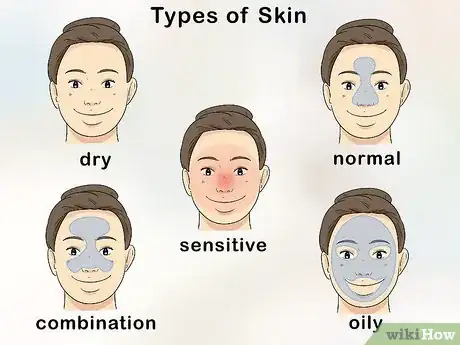
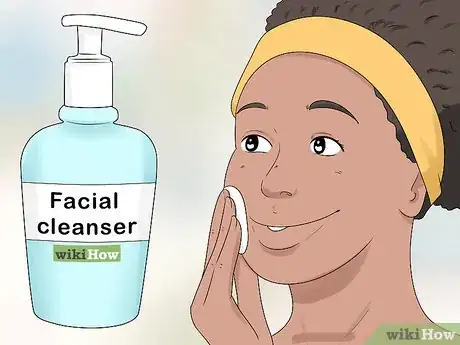

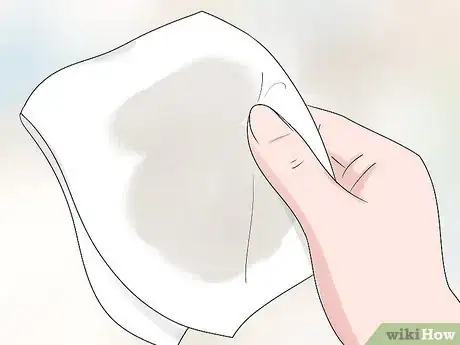

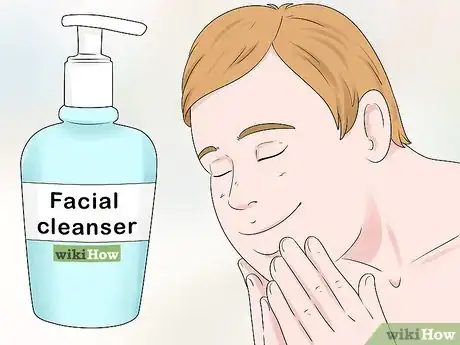
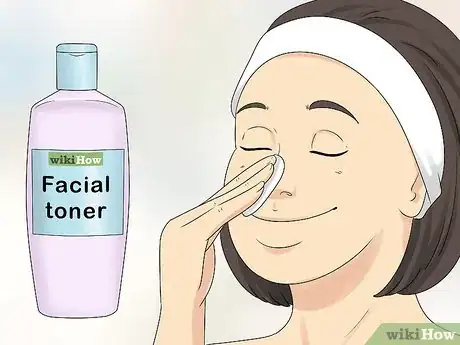
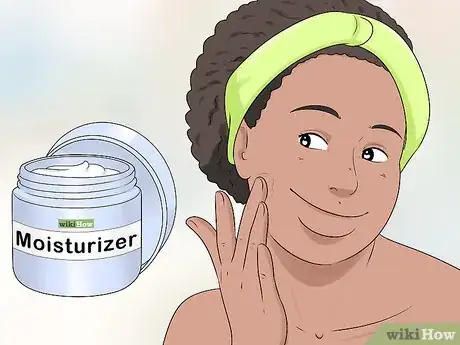
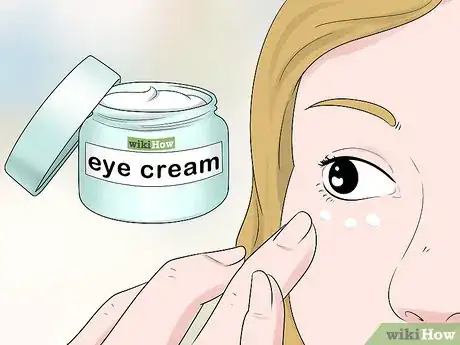
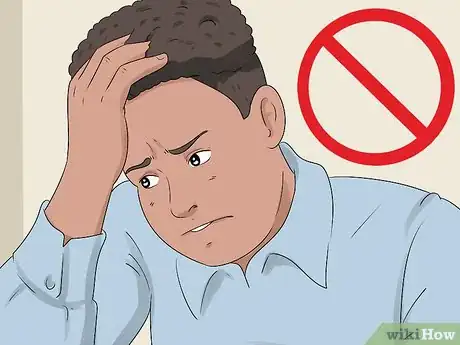
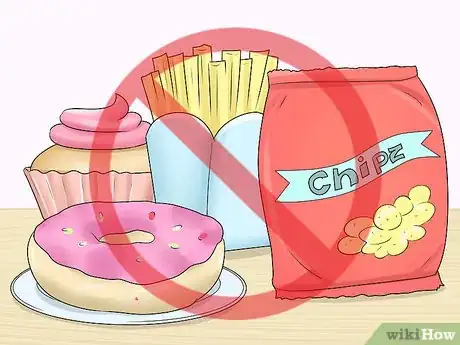
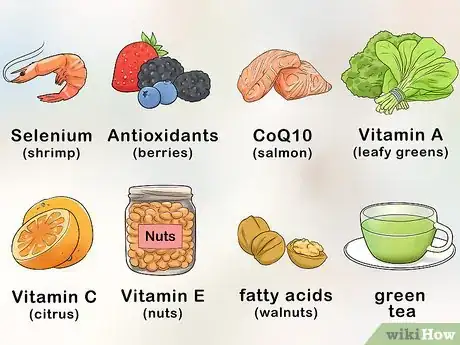

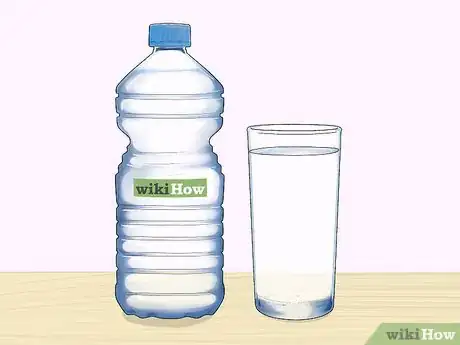

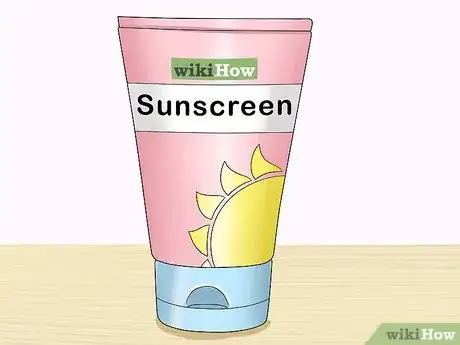
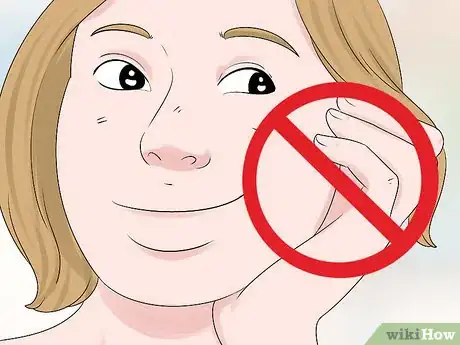
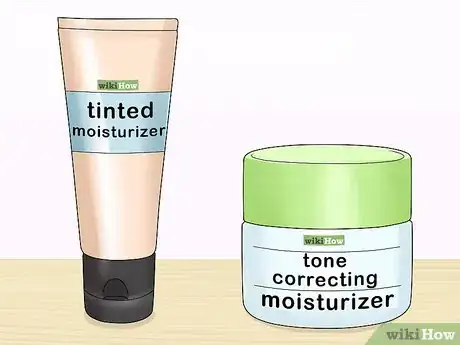
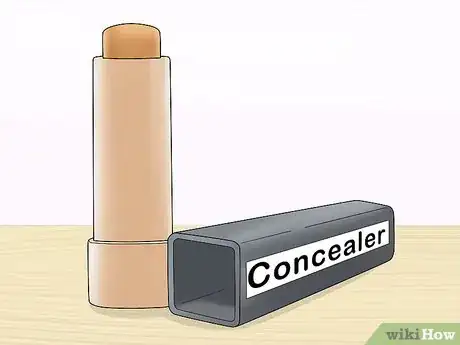
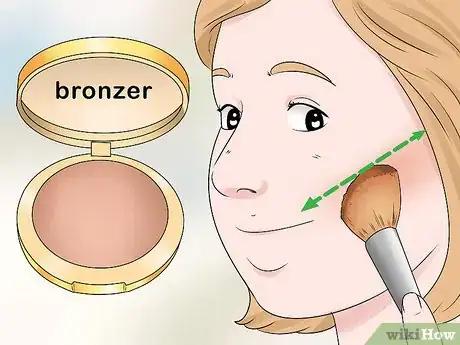

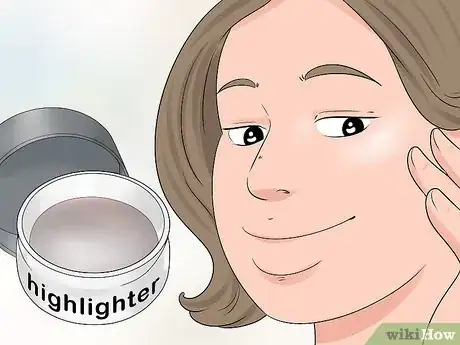


-Step-12.webp)


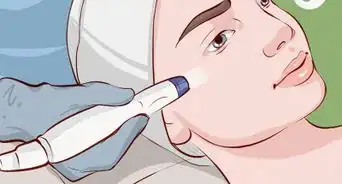
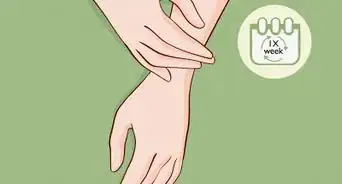














-Step-12.webp)




































